Climate change: Where we are in seven charts and what you can do to help
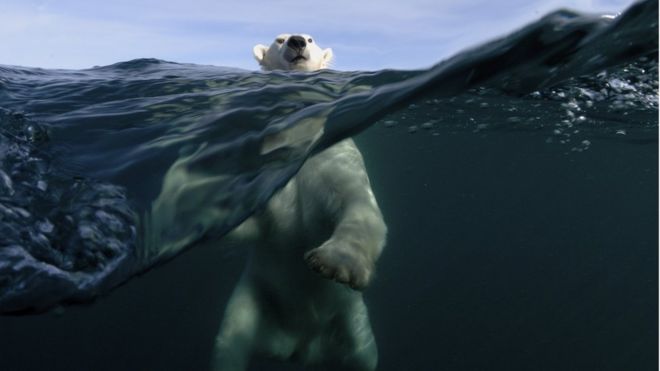 Image copyrightGETTY IMAGES
Image copyrightGETTY IMAGESRepresentatives from nearly 200 countries are gathering in Poland for talks on climate change – aimed at breathing new life into the Paris Agreement.
The UN has warned the 2015 Paris accord’s goal of limiting global warming to “well below 2C above pre-industrial levels” is in danger because major economies, including the US and the EU, are falling short of their pledges.
But scientists at the Intergovernmental Panel on Climate Change (IPCC) – the leading international body on global warming – last month argued the 2C Paris pledge didn’t go far enough. The global average temperature rise actually needed to be kept below 1.5C, they said.
So how warm has the world got and what can we do about it?
1. The world has been getting hotter
The world is now nearly one degree warmer than it was before widespread industrialisation, according to the World Meteorological Organization (WMO).
The global average temperature for the first 10 months of 2018 was 0.98C above the levels of 1850-1900, according to five independently maintained global data sets.
(If you can’t see this chart tap or click here)
The 20 warmest years on record have been in the past 22 years, with 2015-2018 making up the top four, the WMO says.
If this trend continues, temperatures may rise by 3-5C by 2100.
One degree may not sound like much, but, according to the IPCC, if countries fail to act, the world will face catastrophic change – sea levels will rise, ocean temperatures and acidity will increase and our ability to grow crops, such as rice, maize and wheat, would be in danger.
- What is in the Paris climate agreement?
- Final call to stop ‘climate catastrophe’
- Urgency the key at major climate summit

2. The year 2018 set all sorts of records
This year saw record high temperatures in many places across the world amid an unusually prolonged period of hot weather.
Large parts of the northern hemisphere saw a succession of heatwaves take hold in Europe, Asia, North America and northern Africa – a result of strong high pressure systems that created a “heat dome”.
Over the period shown on the map below (May to July 2018), the yellow dots show where a heat record was broken on a given date, pink indicates places that were the hottest they had ever been in the month shown, and dark red represents a place that was the hottest since records began.
The hottest that this location has ever been…

Tap or click to explore the data
Source: Robert A. Rohde/Berkeley Earth. Map built using Carto
The concern is that such hot and cold weather fronts are being blocked – stuck over regions for long periods – more frequently because of climate change, leading to more extreme weather events.

3. We are not on track to meet climate change targets
If we add up all the promises to cut emissions made by countries that have signed the Paris climate agreement, the world would still warm by more than 3C by the end of this century.
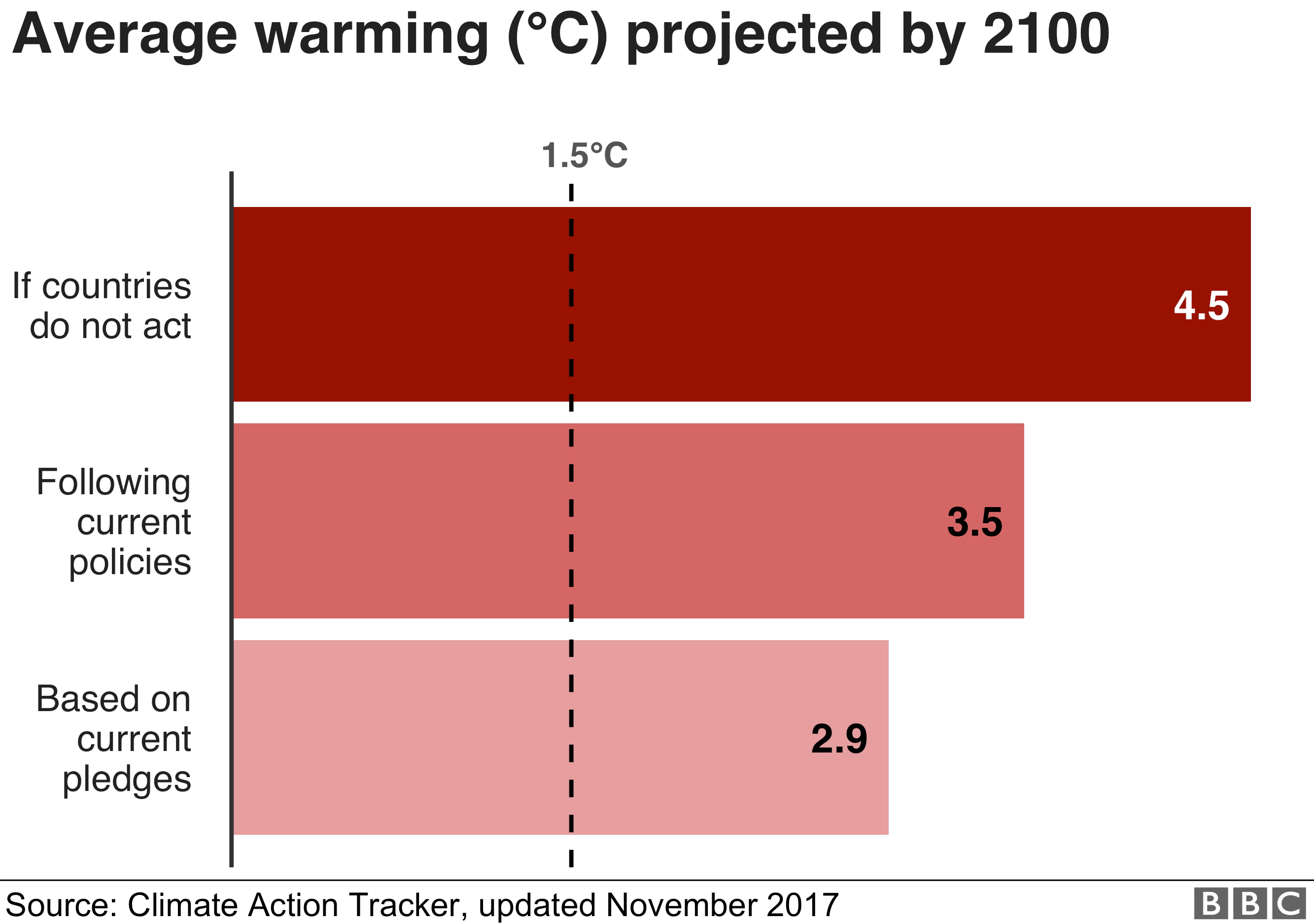

Over the past three years, climate scientists have shifted the definition of what they believe is the “safe” limit of climate change.
For decades, researchers argued the global temperature rise must be kept below 2C by the end of this century to avoid the worst impacts.
Countries signing up to the Paris agreement pledged to keep temperatures “well below 2C above pre-industrial levels and to pursue efforts to limit the temperature increase even further to 1.5C”.
But scientists now agree that we actually need to keep temperature rises to below 1.5C.

4. The biggest emitters are China and the US
The countries emitting the most greenhouse gases by quite a long way are China and the US. Together they account for more than 40% of the global total, according to 2017 data from the European Commission’s Joint Research Centre and PBL Netherlands Environmental Assessment Agency.


The US’s environmental policy has shifted under the Trump administration, which has pursued a pro-fossil fuels agenda.
After taking office, President Donald Trump announced the US would withdraw from the Paris climate change agreement.
At the time, Mr Trump said he wanted to negotiate a new “fair” deal that would not disadvantage US businesses and workers.

5. Urban areas are particularly under threat
Almost all (95%) of cities facing extreme climate risks are in Africa or Asia, a report by risk analysts Verisk Maplecroft has found.
And it’s the faster-growing cities that are most at risk, including megacities like Lagos in Nigeria and Kinshasa in the Democratic Republic of Congo.
Some 84 of the world’s 100 fastest-growing cities face “extreme” risks from rising temperatures and extreme weather brought on by climate change.
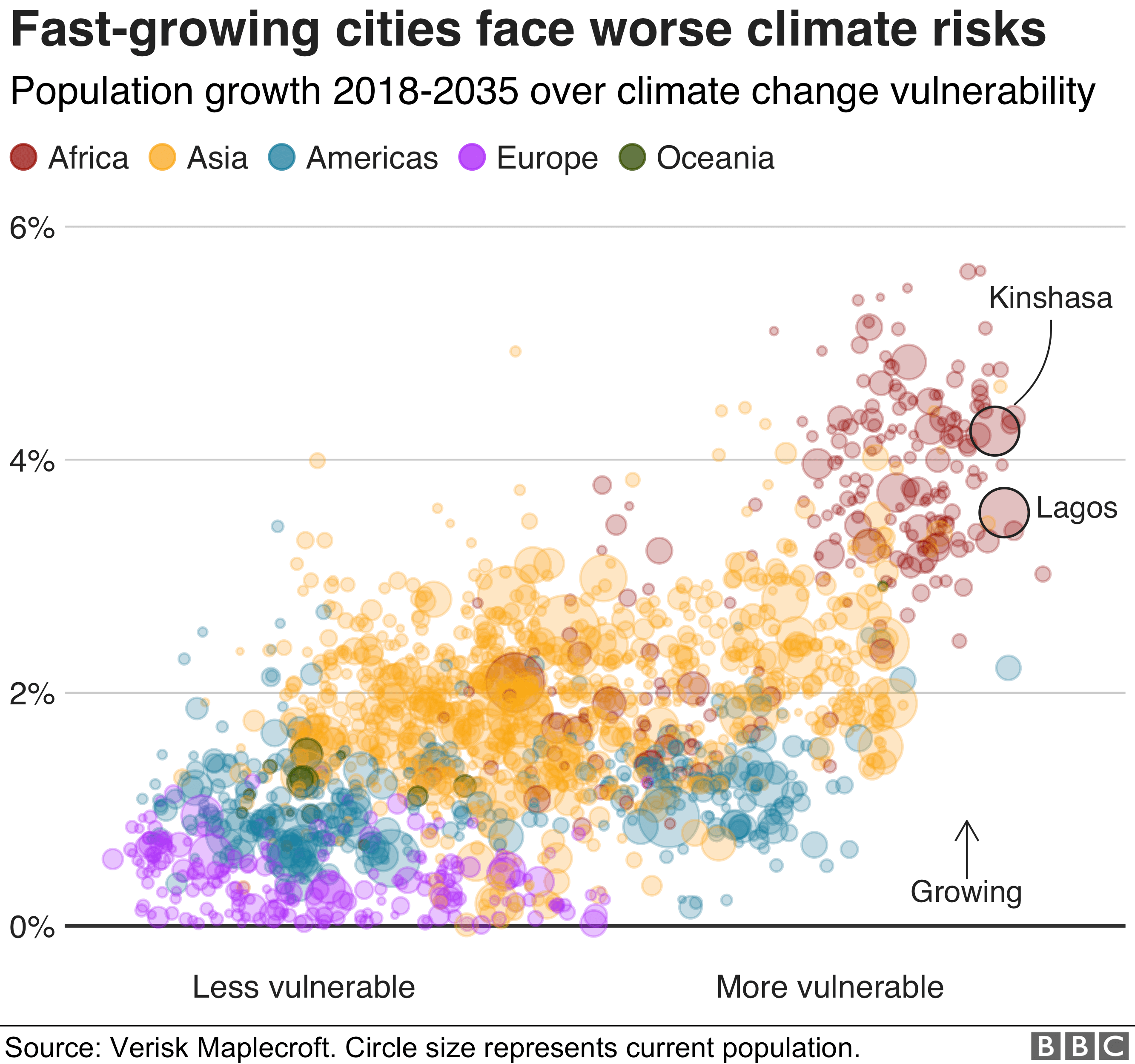

6. Arctic sea ice is also in danger
The extent of Arctic sea ice has dropped in recent years. It reached its lowest point on record in 2012.
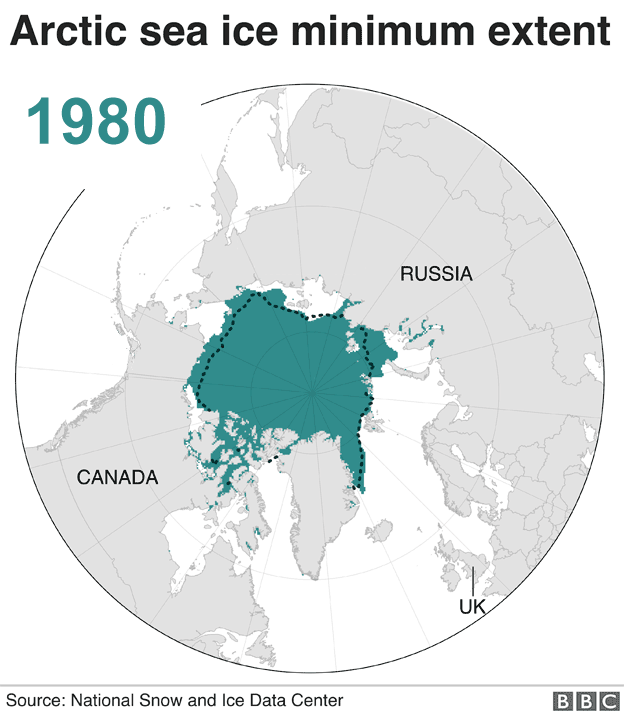 Sea ice has been reducing for decades, with melting accelerating since the early 2000s, according to the UK Parliament’s Environmental Audit Committee.
Sea ice has been reducing for decades, with melting accelerating since the early 2000s, according to the UK Parliament’s Environmental Audit Committee.
The Arctic Ocean may be ice free in the summer as soon as the 2050s, unless emissions are reduced, the committee has said.
The WMO found the extent of Arctic sea ice in 2018 was much lower than normal, with the maximum in March the third lowest on record and the September minimum the sixth lowest.

7. We can all do more to help
While governments need to make big changes – individuals can play a role too.
Scientists say we all have to make “rapid, far-reaching and unprecedented changes” to our lifestyles, in order to avoid severely damaging climate change.
The IPCC says we need to: buy less meat, milk, cheese and butter; eat more locally sourced seasonal food – and throw less of it away; drive electric cars but walk or cycle short distances; take trains and buses instead of planes; use videoconferencing instead of business travel; use a washing line instead of a tumble dryer; insulate homes; demand low carbon in every consumer product.
The single biggest way to reduce your environmental impact on the planet is to modify your diet to include less meat – according to recent studies.
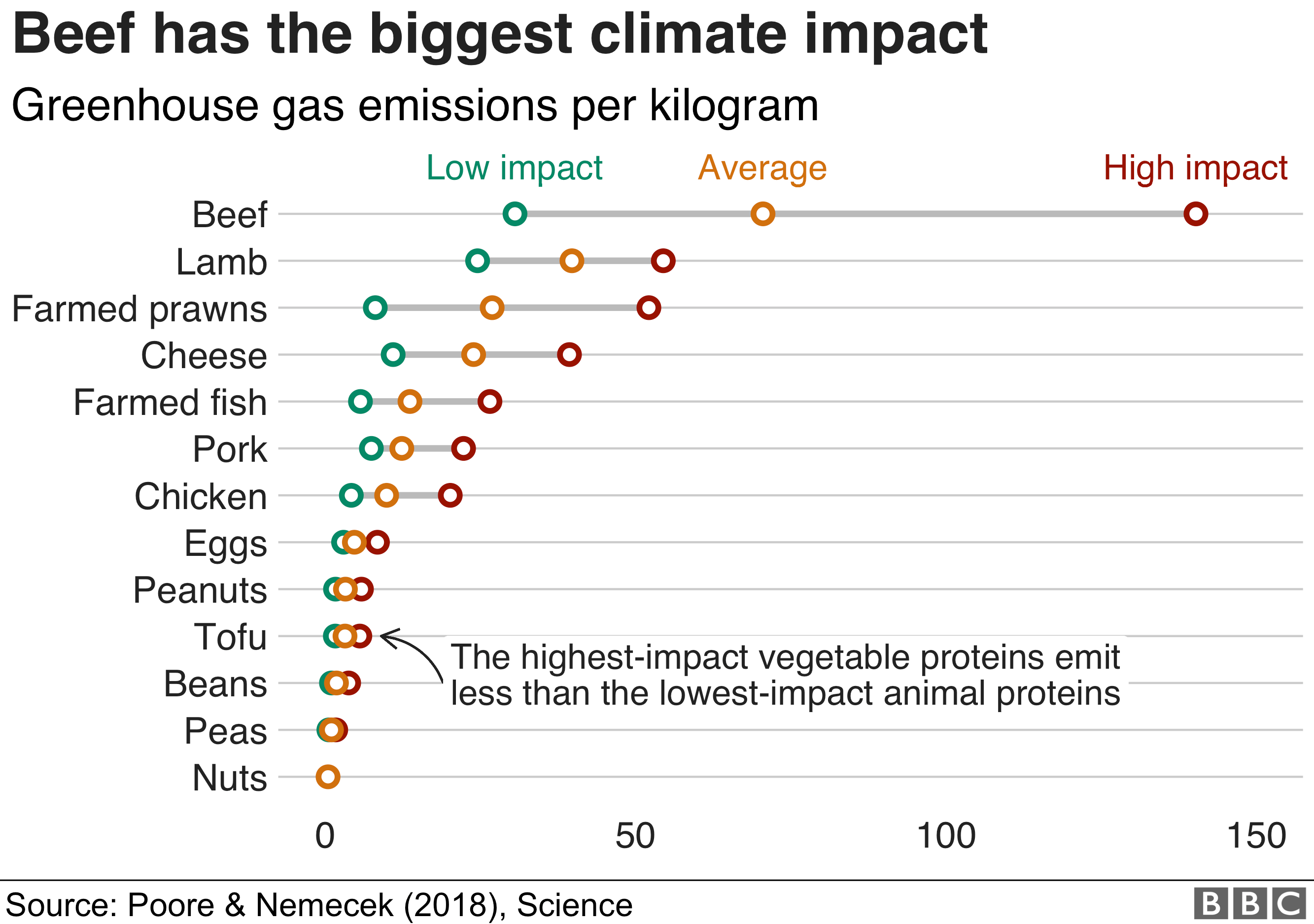

Scientists say we ought to eat less meat because of the carbon emissions the meat industry produces, as well as other negative environmental impacts.
A recent study published in the journal Science highlighted a massive variation in the environmental impact of producing the same food.
For example, beef cattle raised on deforested land produces 12 times more greenhouse gas emissions than those reared on natural pastures.
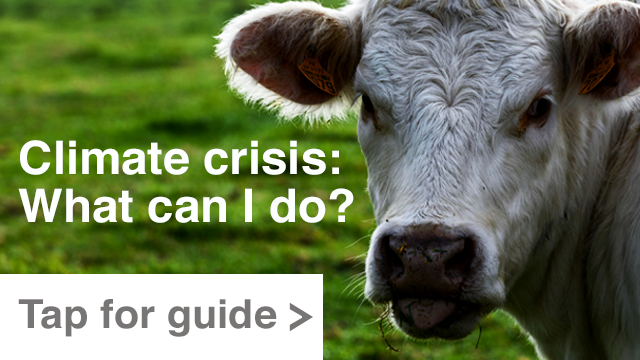 Crucially, the analysis shows that meat with the lowest environmental impact still creates more greenhouse gas emissions than growing vegetables and cereal crops in the least environmentally-friendly way.
Crucially, the analysis shows that meat with the lowest environmental impact still creates more greenhouse gas emissions than growing vegetables and cereal crops in the least environmentally-friendly way.
But as well as altering our diets, research suggests that farming practices need to change significantly to benefit the environment.
By Nassos Stylianou, Clara Guibourg, Daniel Dunford and Lucy Rodgers
